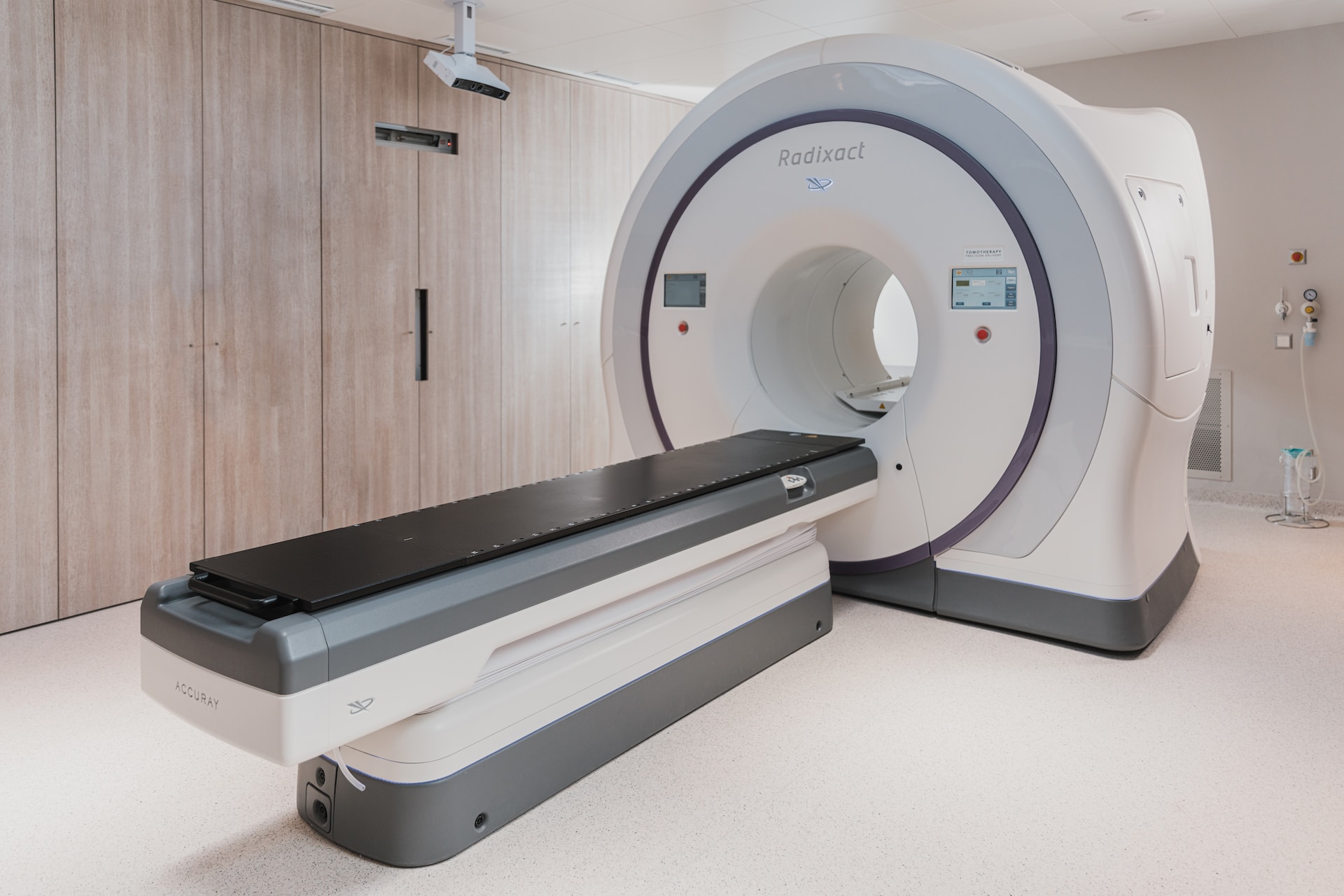Exploring the Pivotal Role of Medical Imaging Technology in Biomarker Discovery

Medical imaging technology empowers researchers to delve deep into the intricacies of the human body, offering a non-invasive means to peer into internal structures and unearth elusive biomarkers. Unlike traditional invasive procedures, medical imaging technology provides a unique advantage, enabling scientists not only to diagnose diseases but, more significantly, to unravel the biomarkers that serve as the linchpin in deciphering and addressing intricate medical conditions.
Understanding Imaging Biomarkers
At the core of this revolution are imaging biomarkers—measurable characteristics obtained through the utilization of various imaging modalities. These imaging biomarkers offer vital insights into the presence, progression, and response to treatment of various diseases. By meticulously analysing the data extracted from imaging biomarkers, researchers and healthcare professionals gain invaluable insights into the underlying mechanisms of diseases, which in turn allows them to develop more effective treatments.
These imaging biomarkers come in various forms, ranging from changes in tissue density to alterations in blood flow and metabolic activity. For example, in cancer research, imaging biomarkers play a pivotal role in identifying tumours, determining their size, and assessing their response to treatment. This information is not just informative but is crucial for making well-informed decisions regarding patient care, as well as monitoring the effectiveness of interventions.
The Significance of Non-Invasive Biomarker Analysis
A cornerstone of medical imaging technology in biomarker discovery is its non-invasive nature, which stands in stark contrast to traditional invasive methods of biomarker analysis, such as biopsies or blood tests. These invasive procedures often bring discomfort to patients and carry the risk of complications. In contrast, medical imaging allows for the collection of biomarker data without the need for invasive interventions, making it not only safer but also more patient-friendly.
Moreover, non-invasive biomarker analysis enables longitudinal studies, where the same patient can be monitored over time to track the progression of a disease or the effectiveness of a treatment. This longitudinal data provides a treasure trove of insights into disease dynamics, unveiling patterns that might remain hidden with single-point measurements.
Significance of Medical Imaging in Biomarker Discovery
Medical imaging, through its ability to provide detailed anatomical and functional information about the human body, plays an indispensable role in biomarker discovery. It is through the visualization of internal structures and the detection of even the most subtle changes that imaging techniques allow researchers to identify potential biomarkers associated with various diseases.
These imaging biomarkers serve a dual purpose. Firstly, they aid in the early detection of diseases, facilitating timely interventions and improving patient outcomes. Secondly, they play a crucial role in monitoring disease progression, assessing treatment response, and predicting patient prognosis. With the continuous advancements in medical imaging technology, the potential for discovering novel biomarkers and subsequently enhancing patient care continues to grow.
Common Imaging Modalities Used in Biomarker Discovery
Several imaging modalities stand as indispensable tools in biomarker discovery, each tailored to specific research needs and applications.
- Magnetic Resonance Imaging (MRI), renowned for its ability to produce highly detailed images of soft tissues, is particularly invaluable in neurological research, offering insights into brain structures, spinal cord integrity, and musculoskeletal assessments. Researchers can utilize MRI to identify biomarkers related to neurological disorders, such as multiple sclerosis and Alzheimer's disease, providing crucial diagnostic and prognostic information.
- Positron Emission Tomography (PET) is a stalwart in the fields of oncology and cardiology, enabling researchers to visualize metabolic processes within the body. In oncology, PET scans help identify and precisely stage tumours, monitor their response to treatment, and determine the efficacy of chemotherapy or radiation therapy. Additionally, in cardiology, PET provides insights into myocardial viability, perfusion, and glucose metabolism, aiding in the assessment of cardiovascular diseases and cardiac biomarker discovery.
- Computed Tomography (CT), known for its capability to generate cross-sectional images of the body, is indispensable for detecting anatomical abnormalities. It plays a pivotal role in the identification of biomarkers related to conditions such as lung cancer, coronary artery disease, and trauma. For instance, in lung cancer research, CT scans can precisely measure tumour size and assess tumour characteristics, aiding in the discovery of biomarkers linked to disease progression and treatment response.
- Single-Photon Emission Computed Tomography (SPECT), another nuclear imaging technique, offers functional insights into organs and tissues. SPECT is frequently utilized in neurology, cardiology, and psychiatry to identify biomarkers associated with conditions like Parkinson's disease, myocardial perfusion abnormalities, and mood disorders.
- Ultrasound is celebrated for its versatility and real-time imaging capabilities. It finds applications in obstetrics, assessing fetal development and maternal health. Additionally, ultrasound plays a crucial role in the evaluation of liver fibrosis, guiding the discovery of biomarkers for liver disease.
- Optical Imaging, which encompasses techniques like fluorescence and bioluminescence imaging, is particularly valuable in preclinical research. It allows scientists to track and quantify specific molecules, cells, or biological processes. For instance, in cancer research, optical imaging can be employed to visualize tumor growth, angiogenesis, and the efficacy of targeted therapies.
- Dual-Energy X-ray Absorptiometry (DEXA), primarily recognized for its role in bone density assessments, has extended its utility to biomarker discovery in metabolic research. It helps identify biomarkers related to bone health, obesity, and metabolic disorders.
In essence, these imaging modalities serve as indispensable tools for scientists engaged in biomarker discovery. They empower researchers to visualize and quantify a wide range of biological processes, from anatomical structures to metabolic activities, facilitating the identification of biomarkers critical for understanding and treating complex medical conditions. Through strategic selection and utilization of these modalities, scientists can advance their research, develop innovative diagnostic tools, and ultimately enhance patient care.
Challenges and Limitations in Biomarker Discovery through Imaging
One of the foremost challenges lies in the complexity of data analysis. Imaging data often arrives in voluminous quantities, demanding sophisticated algorithms and analytical techniques to extract meaningful biomarker information. The development of robust image analysis methods and computational tools is imperative for the effective utilization of imaging data in biomarker discovery.
Another limitation pertains to the need for standardization and reproducibility in imaging protocols. Variations in imaging parameters and acquisition techniques can lead to inconsistent data, potentially affecting the reliability and comparability of biomarker studies. Therefore, standardizing imaging protocols and establishing stringent quality control measures are paramount for ensuring the accuracy and reproducibility of imaging biomarker research.
Successful Biomarker Discovery through Medical Imaging
Medical imaging technology has yielded profound successes in biomarker discovery, with Alzheimer's disease research exemplifying its transformative impact. Imaging biomarkers like amyloid PET scans and hippocampal volume measurements have revolutionized early diagnosis and monitoring of disease progression. They illuminate underlying pathologies, guiding targeted therapeutic development. In the realm of oncology, MRI, CT, and PET scans provide critical imaging biomarkers for assessing tumour response and predicting patient prognosis. By scrutinizing changes in tumour size, metabolic activity, and blood flow, these biomarkers enable tailored treatment strategies, ultimately enhancing patient outcomes and ushering in the era of precision medicine. These real-world examples underscore the pivotal role of medical imaging in advancing biomarker research and improving patient care.
Future Directions and Advancements in Medical Imaging Technology
The future of medical imaging technology holds immense promise for biomarker discovery. Advancements in imaging techniques, including the development of novel contrast agents and imaging probes, will enhance the sensitivity and specificity of imaging biomarkers. Artificial intelligence (AI) and machine learning (ML) algorithms are set to play a pivotal role in analysing complex imaging data, identifying subtle biomarker patterns, and potentially automating aspects of biomarker discovery.
Moreover, the integration of imaging data with other omics technologies, such as genomics and proteomics, will provide a comprehensive understanding of disease mechanisms, paving the way for personalized medicine approaches. The collaborative efforts of imaging experts, biomarker researchers, and clinicians will be pivotal in driving these advancements and translating them into clinical practice.
Collaboration Between Imaging Experts and Biomarker Researchers
To fully harness the power of medical imaging technology in biomarker discovery, collaboration between imaging experts and biomarker researchers is indispensable. Imaging experts bring their technical expertise to optimize imaging protocols, develop advanced image analysis algorithms, and ensure the quality and reproducibility of imaging data.
Biomarker researchers, on the other hand, contribute domain-specific knowledge and clinical insights that guide the selection and interpretation of imaging biomarkers. Collaboration is not only beneficial but essential in this context, and organizations like Oxford Global actively foster such partnerships through events like Biomarkers 2024. At these events, 1-to-1 meetings with prospective collaborators are set up, promoting knowledge exchange, networking opportunities, and driving innovative research forward.
Through collaboration, imaging experts and biomarker researchers can surmount the challenges associated with biomarker discovery through imaging, fostering cross-disciplinary approaches, promoting knowledge exchange, and accelerating the translation of research findings into clinical applications.
Conclusion
Medical Imaging Technology stands as a formidable force in biomarker discovery, revolutionizing the field of healthcare and providing scientists with unprecedented tools for research. Its ability to offer intricate insights into the human body, coupled with its capacity to reveal biomarkers that guide treatment decisions, positions it as a cornerstone of modern science. As scientists and medical professionals continue to harness the power of imaging, we can anticipate ground-breaking advancements that will shape the future of biomarker discovery and ultimately transform the way we diagnose and treat diseases.








